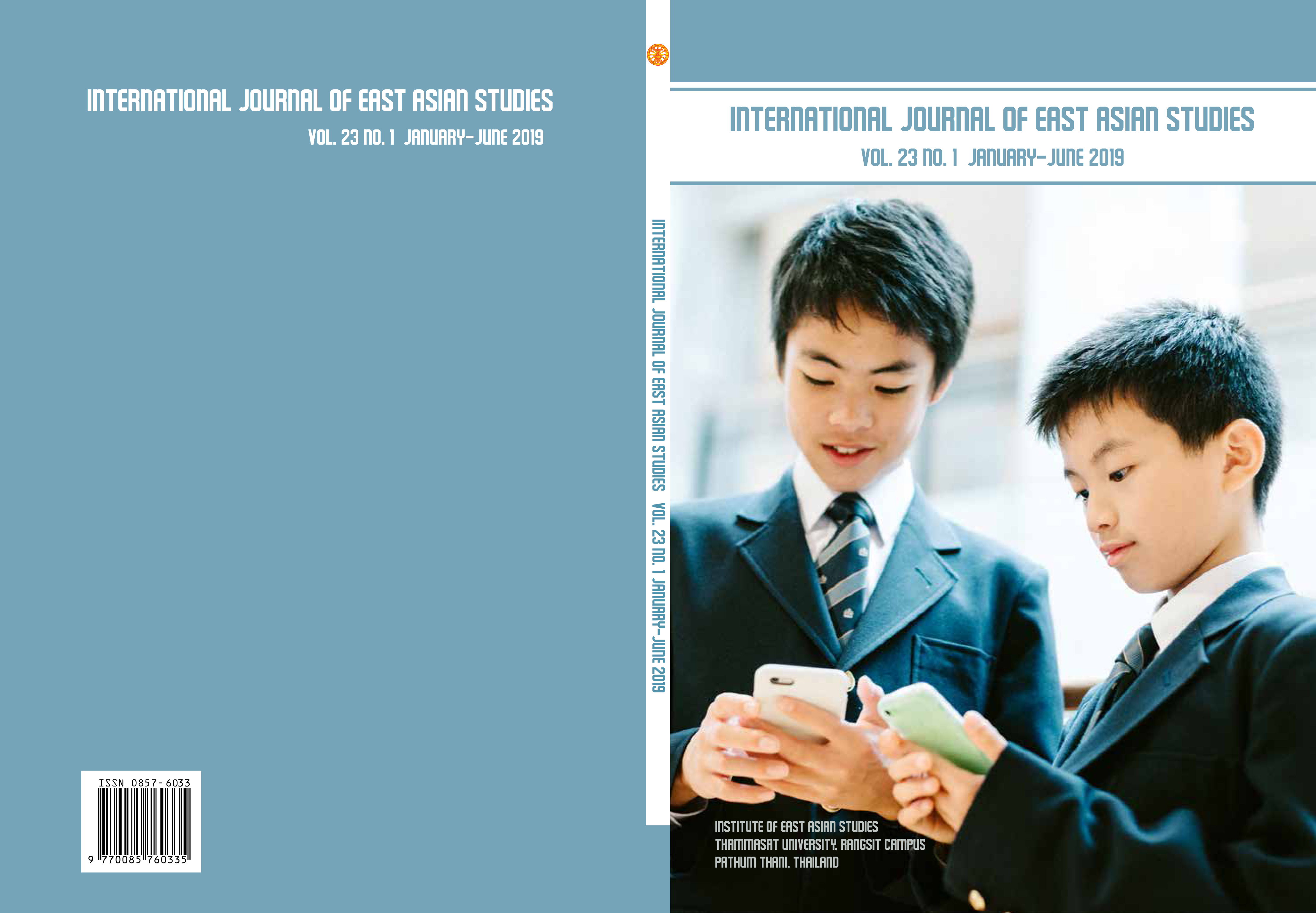Inequality in Urban Infrastructure Accessibility to Slum Settlements: A Case Study of Bangkok Metropolitan
Keywords:
inquality, urban infrastructure, accessibility, slum settlementsAbstract
Typically, accessibility of people with low-income to public urban infrastructure is unfairly managed, and this tendency seems to be gradually higher in the future. Objectives of this study are: (a) to study relationship between pattern of the slum community and accessibility to urban infrastructure; (b) to design system of accessing public services for low income people based on housing problem; and (c) to provide recommendations for social justice policies to the relevant government agencies. The selected three study areas include of Bangkapi district, Bangkok, Klong Luang, Pathumthani and Bang Phli, Samut Prakarn. Methods of the study cover literature review and the research’s interview as well as a fieldwork observation. The questionnaire was used along with the statistical package Social Science (SPSS) to describe the phenomenon of residents’ attitudes and receiving services. In addition, Bangkok’s geographic information is used in the Urban Analysis Model, ArcGIS 10.4 and the ArcGIS Software with the Network Analyst Extension in order to evaluate the relationship between variables and accessibility to the urban infrastructure. The study also combines considerations of the city's access to services, using the Human Development Index (HDI), which is a measuring tool of the United Nations Development Programme (UNDP) in ability to access to city services. The results demonstrate that the urban poor have access to city services and housing, but there is a lack of stability and justification in typical slum areas. In addition, there are also problems of the location of the slum communities in Bangkok and city services as followings:Typically, accessibility of people with low-income to public urban infrastructure is unfairly managed, and this tendency seems to be gradually higher in the future. Objectives of this study are: (a) to study relationship between pattern of the slum community and accessibility to urban infrastructure; (b) to design system of accessing public services for low income people based on housing problem; and (c) to provide recommendations for social justice policies to the relevant government agencies. The selected three study areas include of Bangkapi district, Bangkok, Klong Luang, Pathumthani and Bang Phli, Samut Prakarn. Methods of the study cover literature review and the research’s interview as well as a fieldwork observation. The questionnaire was used along with the statistical package Social Science (SPSS) to describe the phenomenon of residents’ attitudes and receiving services. In addition, Bangkok’s geographic information is used in the Urban Analysis Model, ArcGIS 10.4 and the ArcGIS Software with the Network Analyst Extension in order to evaluate the relationship between variables and accessibility to the urban infrastructure. The study also combines considerations of the city's access to services, using the Human Development Index (HDI), which is a measuring tool of the United Nations Development Programme (UNDP) in ability to access to city services. The results demonstrate that the urban poor have access to city services and housing, but there is a lack of stability and justification in typical slum areas. In addition, there are also problems of the location of the slum communities in Bangkok and city services as followings:
1. Most slum communities are far from the public transportation routes.
2. In term of basic educational institution, people from slum communities within a 1,000-meter radius seems to be able to reach the service. However, most of the slums are located in a radius of more than 1,000 meters, where the number of access is limited.
3. In aspects of market and career sources, most slums are located in a radius of more than 1,000 meters.4. For department store and shopping malls in Bangkok, slum communities can catch within a 1,000-meter radius.
Finally, the study shows measurement of access to basic infrastructure services with an analysis of the Human Development Index (HDI). Findings of the study reveal that accessibility to urban infrastructure and housing is in low level when compared with users’ satisfaction analysis, which is also low.
Downloads
References
Chiapperoi-Martinetti, E. (1996), Standard of Living Evaluation Based on Sen’s approach: Some Methodological Questions. Politeia, 12(43-44). 47-53.
De Silva, S., & Elmelech, Y. (2009), Housing Inequality in the United States: A decomposition analysis of racial and ethnic disparities in homeownership, economics working paper, Archive wp_565, Levy Economics Institute.
Elmelech, Y. (2009). Housing Inequality in the United States: Explaining the white-minority disparities in homeownership. Housing Studies, 27(1), 1-26.
Harris, J. & Todaro M. (1970). Migration, unemployment and development: A two-sector analysis. The American Economic Review, 60(1), 126-142.
Logan, J.R. & Molotch, H. L. (1987). Urban Fortunes: The Political Economy of Place. Berkeley & Los Angeles, CA: University of California Press
Navarro, C., & Ayala, L. (2005). Multidimensional housing deprivation indices with application to Spain. Applied Economics, 40(5), 597-611.
Stark, O. & Bloom, D. E. (1985). The new economics of labor migration. The American Economic Review, 75(2), 173-178.
Sampson, R. J. (2008). Moving to Inequality: Neighborhood Effect and Experiment Social Structure. American Journal of Sociology, 114(1), 189-231.
Peter, S. (2004). Towards a credible poverty framework: From income poverty to deprivation. Retrieved from https://www.sprc.unsw.edu.au/media/SPRCFile/DP131.pdf
Sen, A. (2005). Human Rights and Capabilities, Journal of Human Development, 6(2), 151-166.
Somsuk B. (2011). Inequality and Injustice in Housing. Conclusion Document. May 25, 2011 at room 111. Mahachulalongkorn Building.
Wuff, M., and Reynolds, M., (2010), Housing, Inequality and the Role of Population Mobility, AHURI Final Report No. 158, Australian Housing and Urban Research Institute Limited, Melbourne. Retrieved from: https://www.ahuri.edu.au/research/final-reports/158



